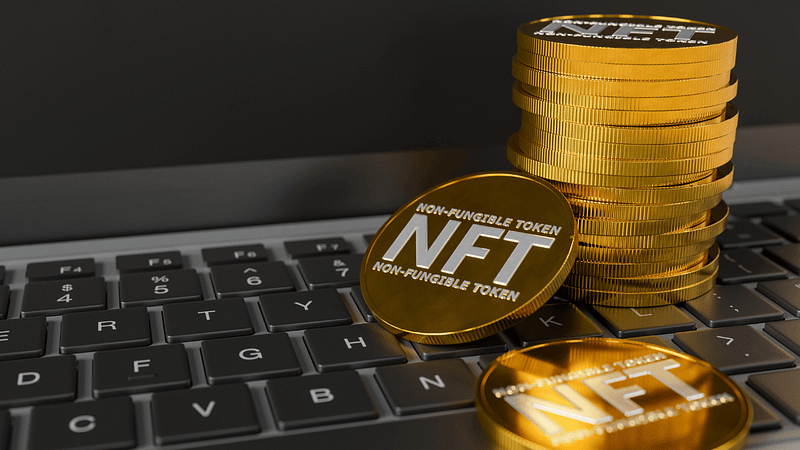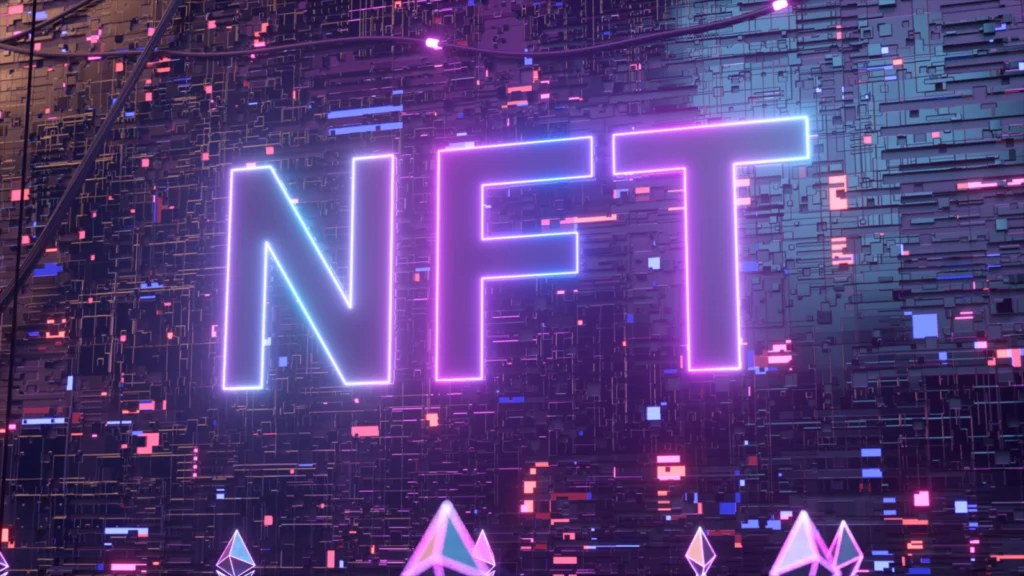The prestigious auction house Christie’s has officially announced the closure of its dedicated Christie’s NFT division, marking a significant retreat from the digital art market that once promised revolutionary changes to the art world. This strategic decision comes as the non-fungible token market experiences a dramatic downturn, forcing traditional art institutions to reassess their digital strategies. The Christie’s NFT division closure represents more than just a business pivot—it signals a broader industry reckoning with the sustainability and long-term viability of digital art collectibles.
Since launching its NFT initiatives in 2021, Christie’s became a prominent player in the digital art space, facilitating millions of dollars in blockchain-based art transactions. However, the recent market volatility and declining investor interest have prompted the auction house to consolidate its operations and focus on traditional art sales where it maintains its historical expertise and market leadership.
The Rise and Fall of Christie’s Digital Art Venture
Christie’s Initial NFT Success Story
Christie’s NFT division began with tremendous fanfare in early 2021, coinciding with the explosive growth of the digital art market. The auction house made headlines when it sold Beeple’s “Everydays: The First 5000 Days” for a staggering $69.3 million, establishing itself as a serious player in the NFT marketplace. This landmark sale not only validated digital art as a legitimate collectible category but also positioned Christie’s as an innovative leader willing to embrace emerging technologies.
The success of the Beeple auction encouraged Christie’s to expand its digital offerings rapidly. The NFT division curated numerous high-profile sales featuring work from digital artists, celebrities, and established traditional artists exploring blockchain technology. These early victories generated significant media attention and attracted a new demographic of tech-savvy collectors to Christie’s platforms.
During its peak operational period, the Christie’s Shuts Down NFT Division processed hundreds of digital art transactions, ranging from single-edition pieces to generative art collections. The division established partnerships with prominent NFT platforms, developed proprietary blockchain integration tools, and hired specialists with expertise in cryptocurrency and digital asset management.
Market Dynamics That Fueled Initial Growth
The initial success of Christie’s NFT division coincided with several favorable market conditions that created unprecedented demand for digital collectibles. Pandemic-related lockdowns drove increased online activity, while stimulus spending and low interest rates provided consumers with disposable income for speculative investments. Cryptocurrency values reached all-time highs, creating a wealth effect among digital asset holders who became prime customers for NFT purchases.
Social media amplification played a crucial role in driving NFT adoption, with celebrities, influencers, and technology leaders publicly endorsing digital art ownership. This cultural momentum created a fear-of-missing-out mentality that drove rapid price appreciation across many NFT categories. Traditional media coverage of record-breaking sales further legitimized the market and attracted mainstream attention to digital art collecting.
The Christie’s NFT division capitalized on this momentum by positioning itself as the premium destination for high-value digital art transactions. The auction house’s centuries-old reputation for authenticity and expertise provided reassurance to hesitant buyers entering the unfamiliar NFT marketplace. This trust factor became a significant competitive advantage during the market’s rapid expansion phase.
The NFT Market Downturn
Statistical Analysis of Market Decline
The Christie’s NFT division closure reflects broader market trends that have seen NFT trading volumes decline by over 95% from their peak levels in early 2022. According to industry tracking services, daily NFT sales that once exceeded $100 million now struggle to reach $10 million across all major platforms. This dramatic reduction in market activity has forced many participants to reconsider their long-term strategies in the digital art space.
Price volatility has become another significant concern affecting the Christie’s NFT division and similar ventures. Many NFTs purchased during the market peak have lost 80-90% of their value, creating substantial losses for collectors and reducing confidence in digital art as a stable investment category. The correlation between NFT prices and cryptocurrency values has intensified this volatility, as broader crypto market downturns directly impact digital art demand.
Trading volume concentration has also shifted dramatically, with activity increasingly focused on a small number of established collections while newer projects struggle to attract buyers. This concentration effect has made it difficult for auction houses like Christie’s to maintain diverse NFT offerings, as collector interest has narrowed significantly compared to the broader enthusiasm seen during the market’s peak period.
Factors Contributing to Market Contraction
Multiple interconnected factors have contributed to the conditions that ultimately led to the Christie’s NFT division shutdown. Rising interest rates and tightening monetary policy have reduced speculative investment across all risk assets, including digital collectibles. Economic uncertainty has prompted many consumers to prioritize essential expenses over luxury purchases like art and collectibles.
Regulatory uncertainty surrounding cryptocurrency and digital assets has created additional headwinds for NFT markets. Potential changes to tax treatment, anti-money laundering requirements, and securities regulations have made institutional participants more cautious about digital asset involvement. These concerns have been particularly relevant for established institutions like Christie’s, which must maintain compliance with complex regulatory frameworks.
Technical challenges have also impacted market confidence in NFT platforms and blockchain infrastructure. High transaction fees, network congestion, and environmental concerns related to energy-intensive blockchain networks have created barriers to widespread adoption. Additionally, security breaches and fraud cases have highlighted risks associated with digital asset ownership and storage.
Impact on the Traditional Art Market

Repositioning Strategy for Established Auction Houses
The Christie’s NFT division closure represents a strategic refocusing on core competencies rather than a complete rejection of digital innovation. The auction house is redirecting resources toward traditional art categories where it maintains competitive advantages built over centuries of operation. This approach allows Christie’s to preserve its market leadership while avoiding the operational complexities and risks associated with rapidly evolving digital markets.
Other major auction houses have adopted similar strategies, with Sotheby’s and Phillips also scaling back their NFT operations significantly from peak levels. This industry-wide retrenchment suggests that traditional art institutions view digital collectibles as a specialized market segment rather than a fundamental transformation of art commerce. The focus has returned to proven categories like contemporary art, impressionist works, and luxury collectibles.
The reallocation of resources from the Christie’s NFT division enables increased investment in areas showing stronger growth potential. These include emerging market expansion, private sales development, and enhanced digital marketing for traditional art categories. The auction house can leverage lessons learned from NFT operations to improve its overall digital strategy without maintaining dedicated blockchain-focused divisions.
Long-term Implications for Digital Art
Despite the Christie’s NFT division shutdown, digital art continues to evolve as a legitimate artistic medium. Many artists who gained prominence during the NFT boom are transitioning to traditional gallery representation and physical exhibitions. This evolution suggests that digital art’s value lies in its creative innovation rather than its blockchain-based ownership verification systems.
Museums and cultural institutions have begun acquiring significant digital artworks for their permanent collections, providing validation for the medium beyond speculative trading markets. These institutional acquisitions focus on artistic merit and cultural significance rather than investment potential, establishing a foundation for digital art’s long-term cultural relevance.
The infrastructure developed during the NFT boom, including digital asset management tools and online exhibition platforms, continues to benefit the broader art ecosystem. Even as speculative trading diminishes, these technological advances support legitimate use cases for digital art creation, distribution, and preservation.
Also Read: Types of NFTs Guide to Non-Fungible Tokens in 2025
Lessons Learned from the Christie’s Experience

Strategic Insights for Art Market Participants
The Christie’s NFT division experience provides valuable lessons for other art market participants considering digital ventures. Timing market entry during speculative bubbles can generate short-term profits but may not support sustainable long-term business models. Institutions must carefully evaluate whether emerging markets align with their core competencies and risk tolerance levels.
Resource allocation decisions require careful consideration of opportunity costs, particularly when established revenue streams remain strong. The resources devoted to the Christie’s NFT division could have been invested in expanding traditional art market activities or developing other digital innovations with more stable foundations.
Brand reputation considerations become crucial when participating in volatile emerging markets. While Christie’s successfully leveraged its reputation to enter the NFT market, the division’s closure required careful communication to maintain credibility with traditional collectors and stakeholders. Established institutions must balance innovation with stability to preserve their long-term market position.
Risk Management in Emerging Art Markets
The Christie’s NFT division closure highlights the importance of treating emerging market ventures as experimental rather than strategic transformations. Establishing clear success metrics and exit criteria allows organizations to make objective decisions about continuing or discontinuing new initiatives based on performance rather than emotional attachment to innovation.
Diversification strategies that limit exposure to single market segments provide protection against dramatic downturns like those experienced in NFT markets. The Christie’s NFT division represented a relatively small portion of the auction house’s overall operations, enabling the company to exit without significant financial impact on core business functions.
Market timing awareness becomes crucial for institutions entering rapidly evolving sectors. The Christie’s NFT division launched during optimal market conditions but faced challenges as enthusiasm waned. Organizations must develop capabilities to recognize market cycle phases and adjust strategies accordingly.
Future Outlook for Digital Art and Blockchain Technology
Emerging Trends Beyond NFTs
While the Christie’s NFT division closure marks the end of one chapter in digital art evolution, new technologies and applications continue emerging in the space. Augmented reality art installations, virtual gallery experiences, and AI-generated artworks represent potential growth areas that may prove more sustainable than speculative NFT trading.
Blockchain technology applications in art authentication, provenance tracking, and rights management show promise for solving legitimate industry problems beyond collectible speculation. These utility-focused applications may provide the foundation for renewed institutional interest in digital art technologies once speculative excess subsides.
The integration of digital elements into traditional art practices continues expanding, with many established artists incorporating technology into their work without relying on blockchain-based ownership systems. This hybrid approach may represent the future of digital art, combining technological innovation with proven artistic and commercial frameworks.
Institutional Adaptation Strategies
Art institutions are developing more nuanced approaches to digital innovation that avoid the all-or-nothing strategies that characterized early NFT adoption. Rather than creating dedicated divisions like the Christie’s NFT division, many organizations are integrating digital capabilities across their existing operations to reduce risk and improve flexibility.
Educational initiatives focusing on digital art appreciation and collecting are expanding, providing the foundation for informed market development rather than speculative trading. Museums, universities, and cultural organizations are developing programs that emphasize artistic merit and cultural significance over investment potential.
Collaboration between traditional art institutions and technology companies is evolving toward partnerships focused on specific problem-solving rather than broad market participation. These targeted collaborations may prove more sustainable than the comprehensive digital transformations attempted during the NFT boom period.
Conclusion
The closure of Christie’s NFT division represents a significant milestone in the evolution of digital art markets, marking the end of the speculative bubble period and the beginning of a more mature phase of development. While the division’s shutdown may seem like a retreat from innovation, it actually reflects a strategic refocusing on sustainable business practices and core competencies that have served Christie’s successfully for centuries.
The lessons learned from the Christie’s NFT division experience will inform future digital initiatives across the art market, emphasizing the importance of balanced approaches that combine innovation with proven business principles. As the digital art market continues evolving, institutions and collectors alike will benefit from the infrastructure, expertise, and market knowledge developed during this experimental period.


